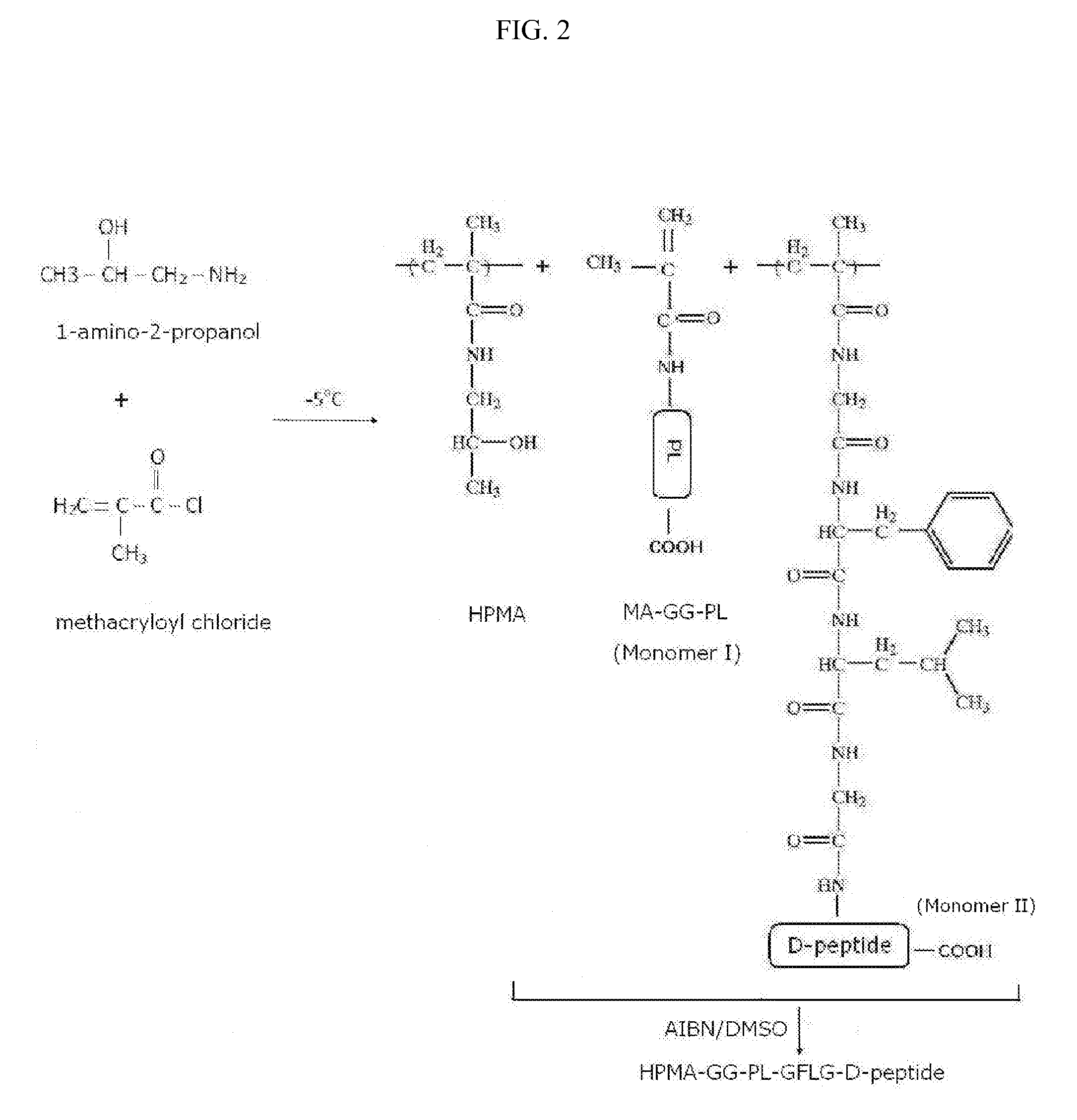Stereoisomer Peptides and Their Polymer Conjugates for HIV Disease
a technology of stereoisomer peptides and polymer conjugates, which is applied in the field of peptides and their polymer conjugates, can solve the problems of life-threatening opportunistic infections, failure to produce traditional vaccines, and global health problems of unprecedented dimensions, and achieves the effects of prolonging shelf life, facilitating oral bioavailability, and prolonging the half-life in blood circulation
- Summary
- Abstract
- Description
- Claims
- Application Information
AI Technical Summary
Benefits of technology
Problems solved by technology
Method used
Image
Examples
example 1
[0122]This example illustrates the identification of peptide labeled SEQ ID NO: 296, as an epitope with immunogenic potential. The sequence of HIV-1 gp 160 protein from B strain HXB2 isolate was retrieved from ViralZone-UniProtKB / Swiss-Prot entries, and was analyzed using the NCBI BLAST algorithm, against the entire database of human protein sequences to determine potential regions in the HIV proteins with homologous regions that overlap with human protein sequences. The comparison analysis revealed a short sequence of about 20 amino acids in HIV gp120 protein that has no sequence homology with any human protein. This short sequence was then analyzed using epitope prediction algorithms (NetMHC and SYFPEITHI) resulting in the identification of three peptides (one 8 mer and two 9 mers) that strongly bind to a particular MHC allele.
[0123]Peptide SEQ ID NO: 296 is an example of one of the two nine-mers. This predicted strong T-cell epitope can be used as ‘antigen’ to create, together wi...
example 2
Synthesis of a Stereoisomer Peptide-Polymer Conjugate Compound
[0124]The synthesis of this ligand-targeted HPMA polymer-conjugate compound is carried out by copolymerization of MA-GFLG-D-peptide monomer and MA-GG-PL monomer to create a ligand-targeted HPMA-GFLG-D-peptide-GG-PL referred here as stereoisomer peptide-polymer conjugate compound (FIG. 2).
[0125]The monomers MA-GG-PL and MA-GFLG-D-peptide are first synthesized in separate reactions from the monomer precursors MA-GG-ONp to which PL is coupled, and MA-GFLG-ONp, to which a D-peptide is coupled by reaction with their activated ONp groups by nucleophilic attack. The monomers (20 mmol ONp) and peptides (PL or D-peptide) (26 mmol) are dissolved (separately) in 400 μl DMF is separate reactions; 30 ml of N,N-diisopropylethylamine (DIPEA) (177 mmol) diluted in DMF (1:1, v:v) is added to each mixture slowly dropwise with a Hamilton micro-syringe while stiffing the mixture at room temperature in the dark overnight. Unreacted ONp groups...
example 3
Synthesis of a Multi-Stereoisomer Peptide-Polymer Conjugates Compound
[0129]The synthesis of ligand-targeted HPMA containing three MA-GFLG-D-peptide monomers each with a different D-peptide and MA-GG-PL monomer with a peptide-ligand (PL) are copolymerized to create a multi-stereoisomer peptide-polymer conjugate compound of the form HPMA-GFLG-D-peptide-1-GFLG-D-peptide-2-GFLG-D-peptide-3-GG-PL (FIG. 3).
[0130]The pre-activated monomer precursors MA-GFLG-ONp and MA-GG-ONp containing ONp groups are prepared by adding to a solution of MA-GFLG-OH (10 mmol) or Ma-GG-OH (10 mmol) in 80 ml of DMF, a solution of 1.67 g of p-nitrophenol (12 mmol) in 20 ml of DMF under stirring and cooling to −10° C., followed by a solution of 2.5 g of DCC (12 mmol) in 8 ml of DMF. The two separate reaction mixtures are stirred for six hours at −10° C., and then overnight at 4° C. The precipitated by product is filtered off and the DMF removed by rotary evaporation. The residue is dissolved in EtOAc and the rema...
PUM
| Property | Measurement | Unit |
|---|---|---|
| molecular weight | aaaaa | aaaaa |
| pH | aaaaa | aaaaa |
| pH | aaaaa | aaaaa |
Abstract
Description
Claims
Application Information
 Login to View More
Login to View More - R&D
- Intellectual Property
- Life Sciences
- Materials
- Tech Scout
- Unparalleled Data Quality
- Higher Quality Content
- 60% Fewer Hallucinations
Browse by: Latest US Patents, China's latest patents, Technical Efficacy Thesaurus, Application Domain, Technology Topic, Popular Technical Reports.
© 2025 PatSnap. All rights reserved.Legal|Privacy policy|Modern Slavery Act Transparency Statement|Sitemap|About US| Contact US: help@patsnap.com



